"Where there are humans, there are cats," reads the first line of "Cats of the World" by Hannah Shaw and Andrew Marttila. It's a simple premise, but the kitten rescue advocates turned it into an extensive research project, examining the way humans and cats interact in (nearly) every corner of the globe.
"Cats of the World" discussion and signing
🗓️ Monday, Oct. 21 at 7 p.m.
📍 San Diego Central Library
330 Park Blvd., downtown
🎟️ $32 (book purchase from Library Shop SD includes up to two tickets)
Millions of fans would likely buy and read anything by Shaw, known as Kitten Lady, and Marttila, her husband, known as The Cat Photographer. Together, they have seven published books, plus calendars, merch and a massive YouTube and social media following — with more books on the way. In that sense, "Cats of the World" feels like an extra treat, offering a rich and in-depth collection of photos and essays.
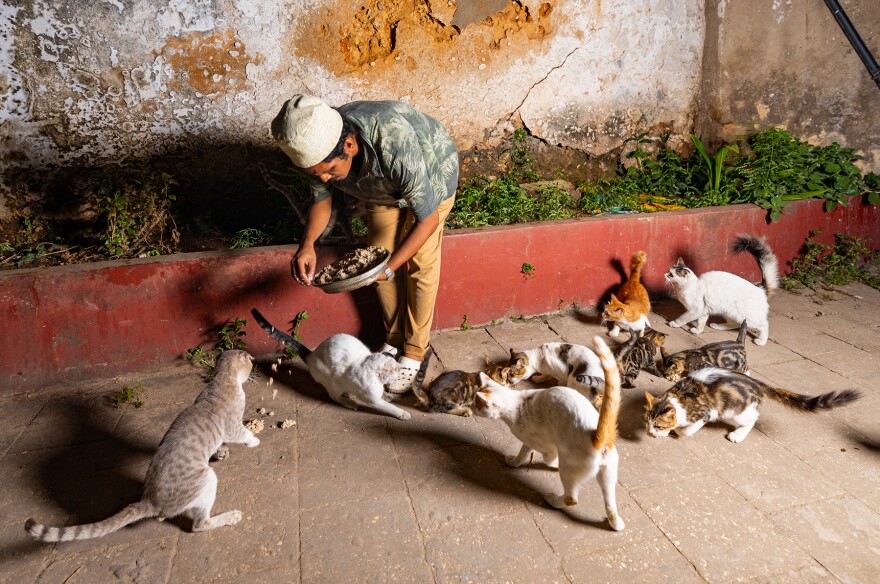
The new book, a coffee-table-style volume, is filled with Marttila's vivid photographs — mostly of cats, though a few feature humans too. One could easily get lost in the photos without reading a single word. The images are captivating, but the writing is the book's hidden gem. Shaw's thoughtful and informative essays take readers to 31 different countries, sometimes hitting multiple cities within each.
"I think the reason that we wanted to do the book was really to highlight that there is this kind of network of compassion around the world for cats. As much as I think sometimes people can feel very divided by culture and by where we live, there are things that really unify us — and compassion is definitely one of them," Shaw said. "There is not a place on earth that we tried to go that we couldn't find someone who is doing something kind for cats. It really transcends language and culture."
"There is not a place on earth that we tried to go that we couldn't find someone who is doing something kind for cats."Hannah Shaw, co-author of "Cats of the World"
Each section, divided by country and city, introduces readers to the region's cats and the people taking care of them, the history of cat welfare and how local culture and sociology shape life for the cats that roam public spaces. It's a collection of scholarship built around a fundamental belief in humanity.
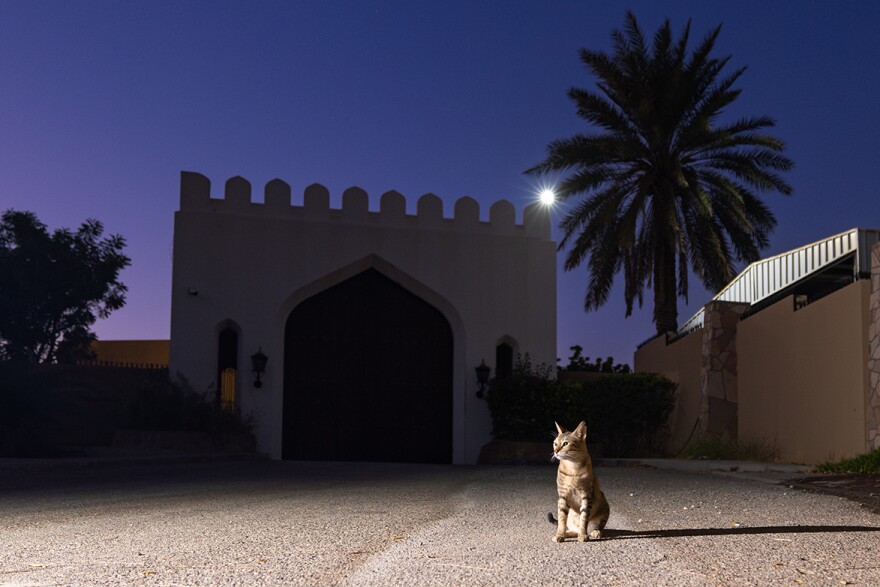
For Shaw and Marttila, this was a dream project. They traveled the world, meeting with cat rescues, sanctuaries and advocates they had encountered through their own advocacy work.
The two also run Orphan Kitten Club, a San Diego-based kitten rescue organization that offers grant funding for kitten welfare worldwide. Their videos include resources for how to foster and care for medically fragile kittens.
For Shaw, compiling the stories was a way to dig into the relationships and complexities of animal welfare.
"There's a lot of intersections here, and I think that's because there's so much that informs the way that cats live. So we can't tell these stories without talking about the architecture of the buildings that they're in, or if there's been a political event or an economic crisis or a weather event or something that's impacted these cats," Shaw said. "I felt like it was important to do justice to the community that these cats were in and also to put front and center the people that are helping them."
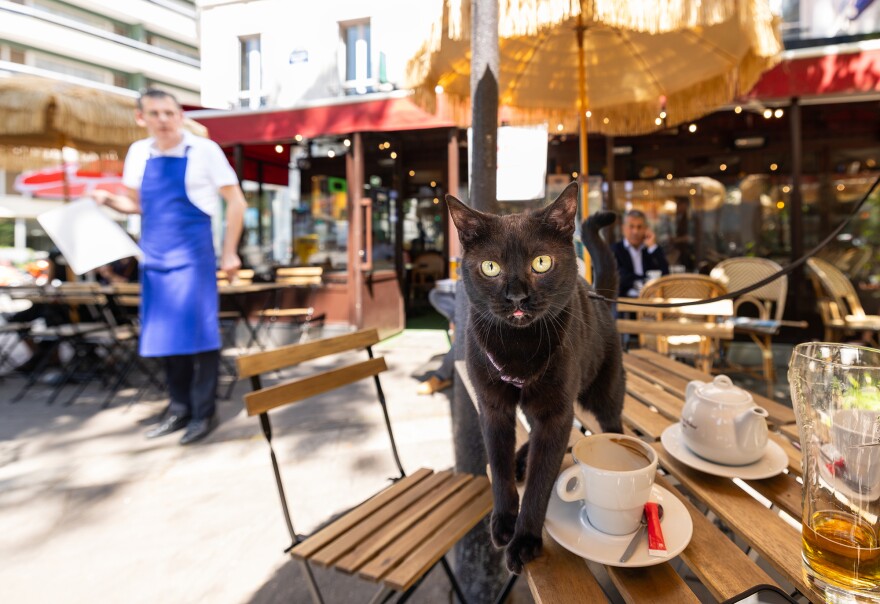
Marttila's photography is striking. He captures eye contact with most cats, whether "domesticated" or not, and each scene paints a picture of life in that city. Cats wander uninhibited among ancient ruins, through bustling markets, in sacred buildings or along picturesque Aegean cliffs — just to name a few.
"I like cats' unpredictability the most — the discerning nature of cats. I think earning their trust and being able to capture a shot that really showcases their personality is a difficult thing to accomplish, and especially if they're not your own cat, if they're a cat on the street or up the side of a mountain," Marttila said. "Being able to build that rapport in a short enough period of time to be able to get a photo before they may run off or distrust you presents a really unique challenge to photographers."
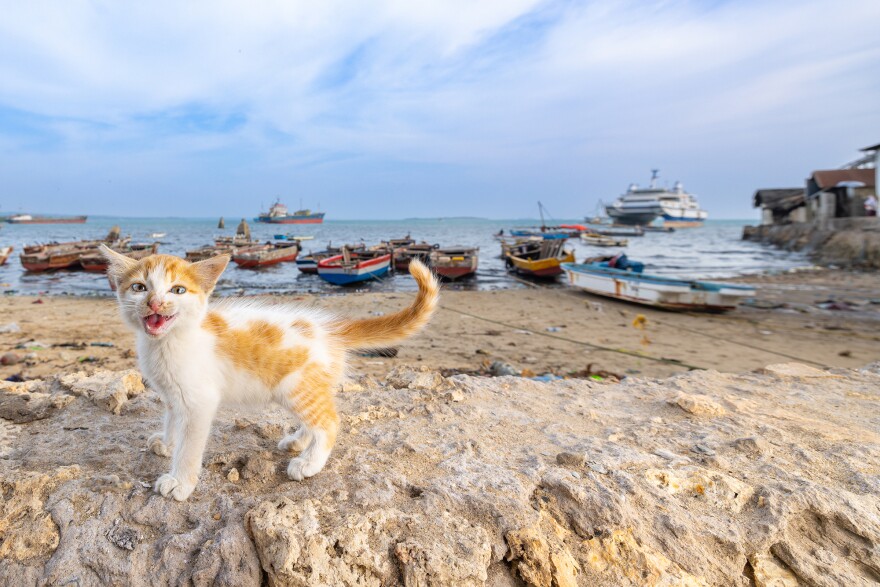
Ultimately, he approaches each shoot with patience, respect — and, often, treats.
"I try to meet the cat where they are. If they're not interested, I never push a photo shoot. How difficult it is always drives me to be a better photographer."Andrew Marttila, co-author of "Cats of the World"
"I try to meet the cat where they are. If they're not interested, I never push a photo shoot," Marttila said. "How difficult it is always drives me to be a better photographer."
One of the regions Shaw and Marttila visited for the book is Baja California, Mexico. In Tijuana, they stopped by Bastet Cat Cafe, owned by Elizabeth Barajas.
"It's not just like to stop in for an espresso and pet a cat. (Barajas) is doing serious community work," Shaw said. "She works with independent rescuers who are in the community, find a kitten, find a cat, don't have a safe place to take them, and they can come there."
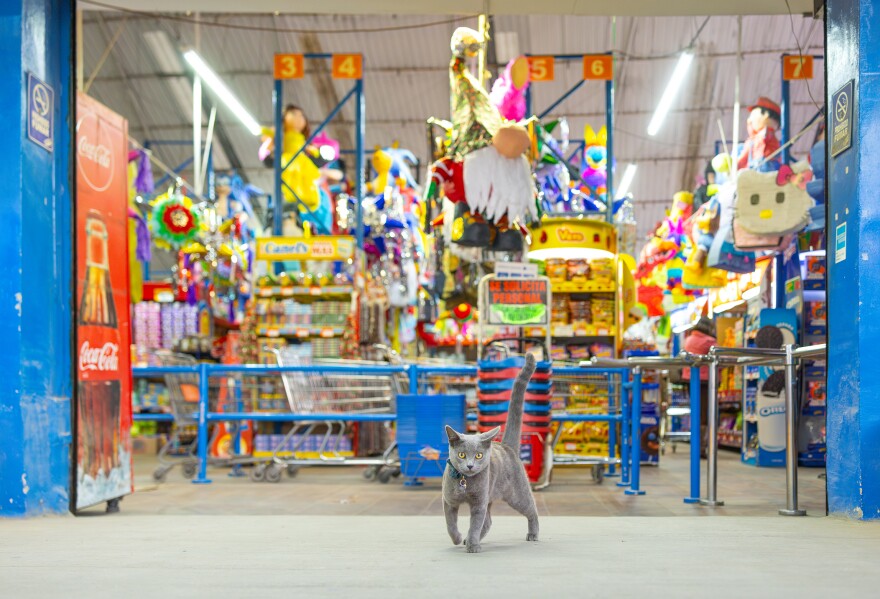
Shaw added that Bastet sends some cats across the U.S. border. With "kitten season" being almost year-round in places like California and northern Baja, there's a greater need for ongoing care and collaboration.
"That's a really interesting piece of doing a global project like this — seeing how communities that are under-resourced and communities that have an abundance of resources can kind of work together," she said.
During the "Cats of the World" book tour from Oct. 15-30, Shaw and Marttila are partnering with Hill's Pet Nutrition to cover adoption costs for up to 400 felines. Participating shelters include Meow Parlor in New York City, Catcade in Chicago, The NOAH Center in Seattle, Williamson County Regional Animal Shelter in Austin, Planned PEThood of Georgia in Atlanta, Pasadena Humane in Pasadena, Orphan Kitten Club in San Diego and Lawrence Humane in Lawrence, Kansas.






